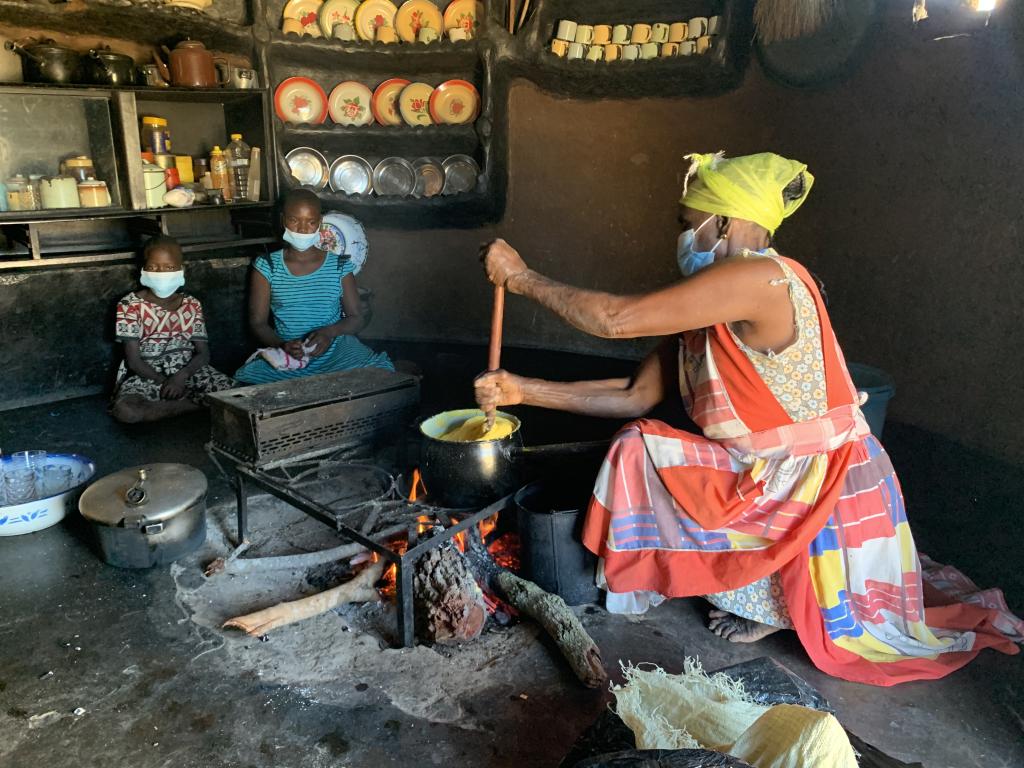April 30, 2024
Comprehensive study of household eating patterns shows adoption of the enhanced crop could improve nutrition for local families, but other support strategies are needed to fully achieve required dietary levels
Encouraging smallholder farmers to adopt maize varieties high in vitamin A could make a major contribution to reducing stunting and childhood blindness in rural Southern Africa, according to a new study. However, more help is needed than simply distributing the new crop if intervention programmes are to successfully address the deficiency.
It has long been known that insufficient vitamin A can lead to stunting, childhood blindness, increase the risk of maternal mortality and reduce the body’s ability to fight infection – and the diets of many smallholder farmers in Southern Africa often contain low levels of the nutrient. Maize that has been conventionally bred to contain higher levels of carotene (PVA maize) can help address the issue, but to date no studies had been made in Zimbabwe of what the nutritional effects would be in rural communities.
The study team recorded the food eaten in 30 rural households in Murehwa District, Zimbabwe during a week in April and November 2021. Weekly household intakes were calculated, as well as the costs of diets using data from market surveys. The impact of PVA maize adoption was modelled assuming all maize products contained observed vitamin A concentrations. In Zimbabwe, maize is eaten two or three times a day so biofortifying maize with provitamin A appeared to be a promising option.
The modelling showed that very few households reached adequate intake of vitamin A with the consumption of PVA maize. However, up to 70% of households were projected to reach around half of their requirements, even with the modest vitamin A concentrations achieved on-farm. Currently only a third of households studied were getting these amounts of vitamin A.
“The nutritional concentration of biofortified crops is related to the environment they are grown in, but these families have few resources to help them farm more productively."
While encouraging, the results show that adopting new maize varieties alone would not be sufficient to deliver adequate vitamin A intake for most households. The problem is twofold: when tested in field conditions, the crop has been shown to have lower levels of carotene than in controlled breeding studies. Added to that, a lack of variety across all food consumed meant that simply adding PVA maize alone would not deliver sufficient quantities of vitamin A to reach recommended levels.
 Preparing food at Murewa Mamombe Farm, Zimbabwe
Preparing food at Murewa Mamombe Farm, Zimbabwe
“There needs to be a better understanding of the links between soil fertility, fertilizer use, and vitamin A concentration to maximise the benefit of PVA maize for smallholders,” said Rothamsted soil scientist Dr Stephan Haefele who was part of the study team. “The nutritional concentration of biofortified crops is related to the environment they are grown in, but these families have few resources to help them farm more productively. Earlier studies have shown, for instance, a significant positive contribution of soil fertility management to grain micronutrient concentration in cereals.”
The adoption of PVA maize would bring a substantial improvement in vitamin A intake in rural Zimbabwe, say the team, but should be combined with other interventions such as diet diversification to fully address vitamin A deficiency. Sustainably reducing vitamin A deficiency in rural communities will likely require a range of interventions.
“This study highlights how provitamin A maize could make a real difference in improving the health outcomes of smallholder farmers in rural areas of Zimbabwe” said Frédéric Baudron of CIMMYT, the lead author of the study. “And the impact could be even higher as greater gains are made through breeding and supported by better agronomy, a key determinant of nutrient concentration in the grain produced.”
Publication:
Projecting the Contribution of Provitamin A Maize Biofortification and Other Nutrition Interventions to the Nutritional Adequacy and Cost of Diets in Rural Zimbabwe